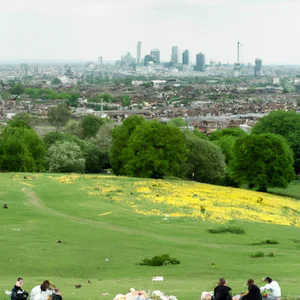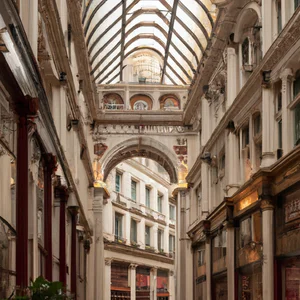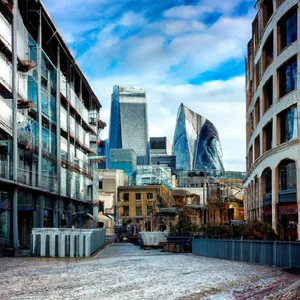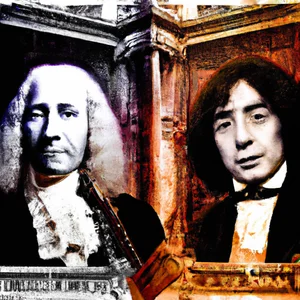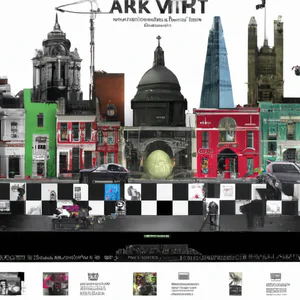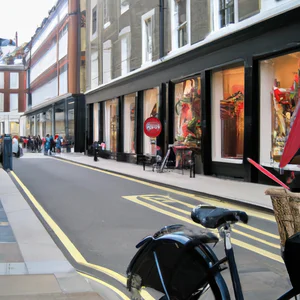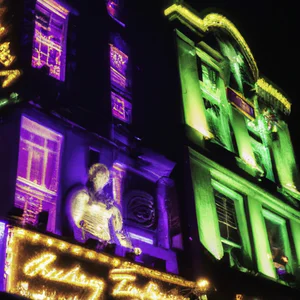Book your experience
Westminster Abbey: 1000 years of history and Gothic architecture in the heart of London
Oh, let’s talk about Westminster Abbey! It’s something that has almost a thousand years of history, if you think about it. Imagine a place where time seems to have stopped, with that Gothic architecture that leaves you speechless. It’s right in the beating heart of London, and I mean, you can’t believe that such an ancient place can be there in the middle of all the chaos of the modern city.
So, this abbey is a bit like an open-air history book, you know? Every corner tells something. I remember that the first time I went there, I felt like I was in a movie, like the costume ones with knights and queens. And I tell you, that mix of stained glass windows and tall arches is like looking at a living painting. I don’t know, maybe it’s just my impression, but it’s as if I had heard the voices of those who walked there before me.
Well, the thing that struck me most was the section dedicated to poets and monarchs. There are so many famous names there, you can’t help but think how important they were. I think it’s a place where history really feels. But, oh, I’m not sure, but I’ve heard that some people say it has a bit of a heavy, almost… mystical vibe. Maybe it’s just my imagination running, but sometimes you feel like you’re in a dream.
Here, if you want some advice: if you decide to visit it, take some time to sit down and savor the atmosphere. Maybe bring a book or, I don’t know, a notebook to jot down your thoughts. It’s a place where you can really reflect. I mean, Westminster Abbey isn’t just a monument, it’s a journey through time, and who doesn’t love a good journey, right?
Thousand-year history: Westminster’s key moments
An encounter with history
The first time I walked through the imposing doors of Westminster Abbey, I felt a shiver down my spine. It wasn’t just the Gothic architecture that surrounded me, but the weight of over a thousand years of history that permeated every stone. Imagine walking across a floor that has seen coronations, royal weddings and funerals of some of the most influential figures in British history. Every corner tells a story, every sculpture a secret.
Key moments that marked the time
Westminster Abbey was founded in 1065 and consecrated in 1066, just before the coronation of William the Conqueror. Since then, it has become the stage of significant historical events. Not only is it the burial place of monarchs, but also of poets, scientists and artists. The famous “Poets’ Corner” is a tribute to personalities such as Geoffrey Chaucer and Charles Dickens, a true pantheon of literary culture.
An insider tip
A little-known detail is that most tourists focus on the interior of the abbey. However, I recommend you also stop in the refectory, where you can admire the remains of a fresco dating back to the fifteenth century. This quiet corner offers a different perspective on the monastic life of the past.
The cultural impact of Westminster
The abbey is not just a place of worship, but a symbol of British history. It played a crucial role in the formation of national identity. The ceremonies that take place there are not only religious events, but also celebrations that unite the British people, making Westminster a cultural center of extraordinary importance.
Responsible tourism practices
In an age where sustainable tourism is key, the abbey has implemented initiatives to preserve its heritage. Part of the funds raised through entrance tickets are invested in the maintenance and restoration of historic buildings. Supporting a visit to Westminster Abbey also means contributing to its conservation.
An experience worth trying
If you want to delve deeper into your visit, take part in one of the evening guided tours, when the warm light of the street lamps illuminates the stained glass windows. These tours offer a unique perspective on the abbey and allow you to explore areas normally closed to the public.
Myths to dispel
A common misconception is that Westminster Abbey is only a place for gifts and ceremonies. In fact, it is a place of reflection and contemplation, where anyone can step back in time and connect with history.
A final reflection
As you venture through the abbey, I invite you to consider how the story intersects with your daily life. In an ever-changing world, it’s fascinating to think about how the stories of those who came before us continue to influence the present. Which Westminster stories inspire you most?
Gothic architecture: a masterpiece to explore
An unforgettable personal experience
I still remember my first visit to Westminster Abbey, when the sun’s rays filtered through the stained glass windows, casting vibrant reflections on the stone floor. As I walked down the aisles, I felt transported back in time, as if the whispers of the monks and regal ceremonies were still present in the air. The grandeur of the Gothic architecture, with its soaring spiers and intricate details, left me speechless. This is not just a place of worship, but a real history book in stone.
The mastery of Gothic architecture
Built between 1042 and 1928, Westminster Abbey is a stunning example of Gothic architecture, characterized by elements such as pointed arches, cross vaults and an elaborate facade. Every detail tells a story. The famous stained glass windows, dating back to different eras, offer a glimpse into the spirituality and art of past centuries. If you want to delve deeper, don’t miss the guided tour, which offers a detailed overview of the history and architecture of the place, led by local experts.
An insider tip
A little-known tip is to visit the requiem hall, a secluded corner in the abbey where more intimate ceremonies take place. Often overlooked by most tourists, this space offers an atmosphere of quiet and reflection, perfect for savoring the majesty of the place without the crowds.
Cultural and historical impact
Westminster’s Gothic architecture is not only a symbol of British greatness, but also represents a significant evolution in the way religious buildings were designed. Its construction marked a period of prosperity and innovation in England, reflecting the growing importance of the monarchy and the Church. The ceremonies held here, from royal weddings to coronations, have a lasting impact on British culture, making Westminster a hub of history and tradition.
Sustainability and responsible tourism
Importantly, Westminster is adopting sustainable practices to preserve its architectural beauty. Guided tours are designed to reduce environmental impact, and the abbey promotes active conservation initiatives. Choosing to participate in walking or cycling tours helps maintain the integrity of this historic site and reduce carbon emissions.
An activity not to be missed
For a unique experience, attend one of the sacred music concerts held regularly within the abbey. The combination of the magnificent acoustics and Gothic architecture makes these events unforgettable, allowing you to experience the spirituality of the place in a very special way.
Myths and misconceptions
A common misconception is that the abbey is only a tourist attraction and not an active place of worship. Indeed, Westminster continues to be a center of spiritual and community life, with regular services recalling its rich history.
A final reflection
As you walk away from Westminster Abbey, ask yourself: what does it really represent Gothic architecture for you? Is it just a symbol of grandeur, or is it a testament to human resilience and creativity over the centuries? Recognizing the beauty and history of this place can transform your visit into an experience of profound and personal discovery.
Royal ceremonies: where history comes to life
An unforgettable encounter with history
I still remember my first visit to Westminster Abbey, a place that seems to vibrate with history at every step. As I walked down the grand corridor, a group of tourists gathered around a small screen broadcasting live images of an induction ceremony. The tension, the palpable emotion and the scent of incense in the air made me realize that here, in Westminster, royal ceremonies are not just events, but moments in which British history comes to life in an extraordinary way.
Historical ceremonies and modernity
Westminster Abbey is the stage for some of the most significant events in British history. From celebrating the wedding of Prince William and Kate Middleton in 2011 to commemorating such illustrious figures as Sir Winston Churchill and Queen Victoria, each ceremony adds a new chapter to this thousand-year-old abbey. According to the official Westminster Abbey website, over 3,000 events have been hosted here, making this place a true guardian of British tradition.
An insider tip
If you want an authentic experience, I recommend finding out about the daily ceremonies that take place in the chapel of San Giovanni, which are often overlooked by tourists. These events, held regularly, offer a unique perspective on contemporary religious and cultural life, far from the frenzy of the more well-known celebrations. Check the abbey’s official website for ceremony dates and times.
The cultural impact of royal ceremonies
The ceremonies that take place at Westminster Abbey are not just festive occasions; they reflect British cultural identity and traditions. Each event embodies a deep connection to history, uniting the past and present in a ritual that continues to define the nation. The participation of dignitaries and members of the royal family in these events highlights the importance of the place as a symbol of unity and stability.
Sustainability and responsibility
In an age where sustainable tourism is more important than ever, Westminster Abbey is committed to reducing its environmental impact. Recycling practices and the use of eco-friendly technology are just some of the initiatives taken to preserve this heritage. Every visitor can contribute to this effort by respecting the rules of behavior and adopting a conscious approach during the visit.
A dream atmosphere
Imagine yourself in the heart of Westminster, surrounded by Gothic architecture and an atmosphere of solemnity. The light filters through the stained glass windows, creating a play of shadows and reflections that makes every corner of the abbey a living work of art. The beauty of this place invites you to reflect on the thousand-year history that has passed through these corridors.
An experience not to be missed
If you have the opportunity to visit Westminster during a royal ceremony, don’t miss the chance to attend a mass or service in the chapel. It will be an experience that will lead you to experience history directly, making you feel part of an event that marked the course of the nation.
Myths and misconceptions
A common misconception about Westminster Abbey is that it is only accessible to those attending official ceremonies. In reality, the abbey is open to the public and welcomes visitors throughout the year, making it an unmissable destination even for those who are not interested in royal celebrations alone.
A final reflection
As you walk away from Westminster Abbey, ask yourself: what stories lie behind the doors of this extraordinary place? Every ceremony, every visit, is an opportunity to connect with a past that lives on in the present. Next time you find yourself in Westminster, take a moment to listen to the whisper of history around you.
Visit after hours: avoid the crowds
A personal experience
I still remember my first visit to Westminster Abbey. The hour was late, the sky was tinged with a deep blue and the warm light of the setting sun enveloped the monument in a golden embrace. While most tourists crowded around the main entrance, I ventured towards the back of the church, where I discovered a small, quiet courtyard. Here, immersed in tranquility, I was able to contemplate the intricate sculptures and listen to the whisper of the wind among the centuries-old trees. This moment of calm transformed my visit into a deeply personal and memorable experience.
Practical information
To experience this magic, I advise you to plan your visit at less crowded times. Westminster Abbey is open every day, but the best times to avoid the crowds are early in the morning, just before the official opening, or late afternoon, an hour before closing. Always check the official Westminster Abbey website for any updates on timetables and necessary reservations, especially in high season.
An insider tip
A little-known tip is to visit the church during religious celebrations, such as Sunday masses. Even if it is not possible to take a complete guided tour, the atmosphere is unique and you will have the opportunity to listen to the choirs echoing through the naves, an experience that few tourists manage to have.
The historical and cultural impact
Westminster Abbey is not just an architectural masterpiece; it is a symbol of British history. Every corner of this sacred place tells stories of monarchs, poets and warriors who shaped the destiny of the nation. Its importance is reflected in the fact that it has been the site of coronations, royal weddings and state funerals, uniting the British population in times of celebration and mourning.
Sustainability and responsible tourism
As part of responsible tourism, consider using public transport to reach Westminster Abbey. The area is well served by the London Underground, and this not only reduces carbon emissions, but allows you to immerse yourself in the daily life of the city.
Immersion in the atmosphere
Imagine walking under the Gothic vaults of the central nave, with the light filtering through the stained glass windows, while the echo of your footsteps mixes with the reverential silence of the place. The air is steeped in history, and every step brings you closer to a rich and fascinating past.
An activity worth trying
I suggest you take one of the evening guided tours, when the abbey is illuminated in a suggestive way. These often less crowded visits offer an interpretation of history that will take you back in time.
Myths to dispel
A common misconception is that Westminster Abbey is only for tourists interested in the monarchy. In fact, it’s a place that also celebrates British culture and art, with graves of writers like Geoffrey Chaucer and Charles Dickens. Don’t just think about the real story; explore the cultural richness this place has to offer.
Final reflection
Next time you plan a visit to Westminster, ask yourself: what stories do you want to discover in this meaningful place? The beauty of Westminster Abbey lies not just in its bricks and stones, but in the stories that each of us can take away.
The famous tombs: eternal rest among the great
A personal encounter with history
The first time I crossed the threshold of Westminster Abbey, it was like enter an open history book. I remember walking down the aisles, my heart pounding with emotion, when my eyes fell on Sir Isaac Newton’s tomb. I was surrounded by reverent silence, yet in that moment, I felt the weight of the ideas that had shaped the world. What would these geniuses have thought if they knew I would be walking over their remains?
A treasure trove of historical personalities
Westminster Abbey is guarded by a series of famous tombs that tell stories of the men and women who shaped Britain’s destiny. Among the illustrious names, in addition to Newton, we find the poet Geoffrey Chaucer, Prime Minister Winston Churchill and Queen Elizabeth I. Each tomb is a work of art in itself, enriched by epigraphs that evoke the contribution of these extraordinary figures. * Churchill’s grave, for example, is simple but profound, a reminder of his leadership in the darkest moments of British history *.
An insider tip
If you want an authentic and less crowded experience, I recommend visiting the abbey on a weekday, preferably early in the morning. Furthermore, bring a notebook with you: it is not uncommon for thoughts and reflections to emerge during the visit that deserve to be written down.
The cultural impact of tombs
These graves are not just memorials; they are a reflection of British culture and history. Each personality buried here has left an indelible mark, contributing to the narrative of a country that has influenced the entire world. The ceremonies that take place here, from coronations to funerals, further cement its role as the epicenter of British culture.
Responsible tourism practices
With a view to sustainable tourism, it is important to remember to respect the sacred atmosphere of this place. Avoiding touching or damaging graves and maintaining respectful behavior is essential to preserving the historicity of Westminster for future generations.
An immersive experience
For a truly unforgettable experience, take a guided night tour of the Abbey. Walking among softly lit tombs while an expert tells fascinating stories is a unique way to connect with history.
Myths and misconceptions
A common misconception is that Westminster Abbey is only a burial place. In fact, it is also a lively center of religious and cultural activities, with regular functions involving the local community.
A final reflection
As you leave the abbey, I invite you to reflect: What stories of greatness and personal challenge could the Westminster tombs tell if they could talk? Next time you walk among these wonders, think about how each of us contributes to history, even in the most everyday moments.
A hidden corner: the secret gardens of Abbey
A personal experience between flowers and history
I vividly remember my first encounter with the secret gardens of Westminster Abbey. After a long day of visiting the architectural and historical wonders of the area, I decided to get lost among the little-traveled paths of these gardens. Immediately, the din of the city faded, giving way to an almost mystical silence, broken only by the chirping of birds and the rustling of leaves. This hidden corner, surrounded by ancient stone walls and Gothic arches, seemed like a secret refuge, away from the chaos and crowds.
Practical information on a hidden treasure
The Secret Abbey Gardens are only accessible to visitors to Westminster Abbey and are located on the south side of the building. They are only open during the abbey’s visiting hours, so it is advisable to check the official website for updated times and book a ticket in advance. These gardens offer an insight into everyday life in London’s past, with historic plants and flowers dating back centuries.
An insider tip
A little-known tip is to visit the gardens during the first hour of opening, when the sun rises and the rays filter through the leaves, creating an almost enchanted atmosphere. It’s a perfect time to take photographs and enjoy the tranquility before the crowds arrive. Also, don’t forget to explore the small pond in the center of the garden, an ideal place to reflect and savor the beauty that surrounds you.
The cultural impact of this green space
These gardens are not only a haven of beauty, but also a symbol of the connection between nature and history. In the Anglo-Saxon tradition, gardens were spaces of meditation and reflection, a place where thinkers and artists retreated to find inspiration. Their presence within a context so steeped in history, such as Westminster Abbey, further enriches the cultural experience, offering a fascinating contrast between the grandeur of the structure and the simplicity of nature.
Sustainable tourism practices
Visiting them is also an opportunity to promote sustainable tourism practices. The care and maintenance of these gardens is based on ecological methods, and respect for the environment is fundamental to preserving this corner of tranquility in the heart of London. Choosing to explore on foot or by bike rather than by car helps keep the air clean and protect these green spaces for future generations.
Immerse yourself in the atmosphere
Walking along the paths, surrounded by flower beds and centuries-old trees, it is impossible not to feel part of a bigger story. The secret gardens of Abbey offer a sensory experience that involves not only sight, but also smell and hearing, creating an atmosphere of peace and introspection.
An activity worth trying
For an unforgettable experience, bring a book of poetry or a journal with you. Sit on a bench in the garden and let the words flow as you soak in the beauty that surrounds you. This simple act of writing can turn into a creative meditation, with the history of Westminster as a backdrop.
Addressing the myths
A common misconception is that Westminster Abbey is just a place of architectural grandeur and ceremony. In reality, the secret gardens reveal a more intimate and personal dimension, a connection with history that often escapes the most hasty tourists.
A final reflection
After having lived this experience, I wonder: how many of us take the time to explore the lesser-known places of the cities we visit? The secret gardens of Westminster Abbey are not just a place to visit, but an invitation to slow down and embrace the beauty and history that often remain hidden in the folds of our tourist adventures.
Culture and art: masterpieces to discover
A personal experience that awakens the senses
I still remember the first time I visited Westminster Abbey. As I crossed the threshold of this centuries-old monument, the scent of ancient wood and beeswax enveloped me. The light filtered through the stained glass windows, creating an almost mystical atmosphere. Every corner told a story, every statue a chapter of a narrative that spans the centuries. It was at that moment that I understood the importance of Westminster not only as a place of worship, but as a true treasure chest of culture and art.
Practical and up-to-date information
Westminster Abbey is not just a place of religious celebrations; it is a living museum that houses priceless works of art. During my visit, I discovered that the abbey offers guided tours that take you through the different chapels and crypt, explaining the meaning of each work of art. Tours can be booked online on the abbey’s official website and are available also in different languages. He reminds you to check the opening times, as the abbey is closed during some religious celebrations.
An insider tip
If you want a truly unique experience, try to attend one of the “lucky services” held in the church. These celebrations are not always publicized, but they offer the opportunity to experience the abbey in an authentic and less touristy context. The feeling of being surrounded by a community that celebrates history and culture is indescribable.
A significant cultural impact
The culture and art of Westminster Abbey are not just visual representations, but tell the story of the British monarchy and the Anglican church. The tombs of kings and queens, memorials and works of art reflect a cultural heritage that has shaped the nation. Each sculpture and painting is a fragment of a collective narrative that continues to influence British culture and its identity.
Sustainability and responsibility
In an age where responsible tourism is key, the abbey has implemented sustainable practices, such as reducing plastic use and improving the energy efficiency of buildings. Supporting these initiatives, visiting consciously and respecting the rules, can help preserve this magnificent place for future generations.
Immerse yourself in the atmosphere
Imagine walking along the stone corridors, listening to the soft echo of your footsteps, as you observe the expertly carved details. The beauty of Gothic architecture is manifested not only in the grandeur of the naves, but also in the small details of the stained glass windows, which tell stories of saints and martyrs. Each visit is a journey through time, an opportunity to reflect on the past and its impact on the present.
An activity worth trying
Don’t miss the opportunity to visit Poet’s Corner, the resting place of some of Britain’s greatest writers, including Geoffrey Chaucer and Charles Dickens. Book a dedicated tour that explores the literary works that have influenced British culture and discover how these writers have left an indelible mark on Westminster and beyond.
Myths and misconceptions
A common misconception is that Westminster Abbey is only a burial place. Although the tombs of famous monarchs and historical figures are a major attraction, the abbey is also a center of cultural activities, musical events and art exhibitions. Ignoring this aspect would be like reading only the cover of a book full of stories.
Final reflection
As I left Westminster Abbey, I asked myself: How many stories are contained within these walls? Each visit is an invitation to discover a new chapter in Britain’s cultural history. I invite you to explore this extraordinary heritage and be inspired by the stories waiting to be told.
Sustainability in Westminster: responsible practices
A personal experience with sustainability
I vividly remember my visit to Westminster Abbey on a spring morning, when the sun filtered through the stained glass windows, creating an almost mystical atmosphere. While admiring the architectural beauty, I noticed a small sign talking about sustainable initiatives undertaken by the Abbey. This moment made me reflect on how even the most historic places can embrace the future responsibly, combining their rich heritage with an ecological awareness.
Sustainable practices in a historic place
Westminster Abbey has implemented a number of sustainable practices to reduce its environmental impact. These include the use of renewable energy to power the structures and the installation of rainwater harvesting systems for gardening. According to Abbey’s official website, these efforts have led to a significant reduction in carbon emissions, proving that even a historic icon can lead the way in the fight for a healthier planet.
An insider tip
A little-known tip is to take one of the guided tours that focus on the Abbey’s sustainable practices. During these visits, you can also discover the efforts to preserve Gothic architecture and historical monuments through innovative restoration techniques. It’s a unique opportunity to see how the past and present can coexist in harmony.
The cultural impact of sustainability
Westminster Abbey’s commitment to sustainability is not just a matter of environmental responsibility; it is also a loud and clear message for visitors. In an age where climate change is a growing concern, seeing a place of such historical significance adopt eco-friendly practices serves as an inspiration. This approach not only protects cultural heritage, but also invites broader reflection on our collective responsibility towards the planet.
A focus on sustainability in tourism
When you visit Westminster, try to adopt sustainable practices too. Use public transport to get there, choose to bring a reusable water bottle with you and take advantage of the surrounding green areas for a low-impact picnic. These small gestures can help preserve the beauty of this extraordinary place for future generations.
Immerse yourself in the atmosphere of Westminster
As you walk through the majestic naves of the Abbey, let yourself be enveloped by the history that permeates every corner. The feeling of being surrounded by centuries of tradition and culture is palpable. Don’t forget to gaze up at the stunning stained glass windows and intricate sculptures, reflecting on how these works of art have been preserved and cared for through responsible practices.
An unmissable activity
For a truly unique experience, attend a gardening workshop hosted by Abbey, where you can learn how to care for plants using eco-friendly methods. This will not only give you the opportunity to connect with nature, but will also allow you to delve into the history of the gardens surrounding this iconic monument.
Common myths about sustainability in Westminster
A common misconception is that historic places such as Westminster Abbey cannot integrate modern practices due to their fragile structures. In fact, Abbey demonstrates how innovation can coexist with tradition, transforming the way we think about tourism in places of great historical value.
A final reflection
As you walk away from Westminster Abbey, ask yourself: how can we all contribute to more sustainable tourism? Every small gesture counts, and the beauty of this place reminds us that history and the future can truly go hand in hand.
A local café: authentic tastes in the heart of London
I vividly remember the moment when, after visiting the imposing Westminster Abbey, I found myself looking for somewhere to enjoy a coffee. Despite the beauty and grandeur of the abbey, I needed a break to reflect on all I had seen. So, following the scent of roasted coffee, I ventured to a small café a few steps from the abbey. The venue, called The Cellarium Café & Terrace, is hidden under the arches of the abbey itself, and offers a welcoming and intimate atmosphere, perfect for recharging your energy.
An authentic experience
This cafe is not just a place to stop for a drink; it is an experience that connects you with the historicity of the place. Sipping on a flat white while admiring the Gothic architecture around me, I realized that every sip was a way to savor the local culture. The menu offers a selection of traditional British inspired dishes, made with fresh, seasonal ingredients, many of them they come from local producers. It’s a way to support the local economy and, at the same time, enjoy the authentic flavors of London.
An insider tip
If you’re looking for a truly unique experience, try their afternoon tea, a British tradition served here with a contemporary twist. Not only will you be able to enjoy sweet and savory delicacies, but you will also have the opportunity to savor tea in an environment steeped in history. And who knows, you might even have a chance encounter with some local historian or artist who stops here for a break!
Cultural impact
The Cellarium isn’t just a café - it’s an integral part of Westminster culture. Its location makes it a meeting point for visitors and locals, creating a vibrant and welcoming atmosphere. This type of coffee helps keep alive the tradition of “social coffee”, where people gather to discuss, share stories and enjoy each other’s company, just like in centuries past.
Sustainability and responsibility
In an era where sustainable tourism has become crucial, the Cellarium is committed to using eco-friendly products and responsible practices. From choosing organic ingredients to using recyclable materials, the café is a great example of how even historic places can adopt modern practices to protect the environment.
An experience worth trying
If you’re in Westminster, don’t miss the chance to stop by the Cellarium. It’s the perfect place to reflect on what you’ve just seen and feel part of London’s history. Who knows, you might meet some other travelers with whom you can exchange impressions about the abbey and the city in general.
Myths and misconceptions
A common misconception is that cafes near tourist spots are expensive and of poor quality. In fact, the Cellarium offers a range of options at reasonable prices, while maintaining a high standard of quality. Don’t be fooled by appearances; Sometimes, the most iconic places hide culinary gems.
A personal reflection
After that coffee, I realized that the experience of visiting Westminster Abbey is not just limited to seeing monuments and tombs, but also extends to discovering the little corners that animate the daily life of the city. Next time you visit a historic place, take the time to explore the local cafes and restaurants too – you might find a piece of history that surprises you. And you, have you ever discovered a hidden corner that enriched your travel experience?
Historical curiosities: Westminster secrets revealed
A thought-provoking anecdote
During my last visit to Westminster, while walking among the ancient stones of the Abbey, I came across a small group of tourists taking photos. But what caught my attention were not the imposing monuments, but a mysterious corner hidden behind a shrub. It was a small plaque dedicated to a street artist who, centuries ago, performed near the Abbey, forgotten by most visitors. This chance encounter made me reflect on how often we overlook the stories of those who have contributed, even invisibly, to the rich fabric of Westminster’s history.
History and secrets
Westminster is a melting pot of historical events that have shaped the destiny of the United Kingdom. From the celebration of the first coronation in 1066 to the decision to abolish slavery in the 19th century, every corner tells stories of power, conflict and change. Visit the tomb of Sir Isaac Newton, a giant of science, and be fascinated by the fact that his death in 1727 occurred at a time when science was beginning to challenge traditional beliefs.
Insider tip
A little-known tip: if you want to discover historical curiosities that you won’t find in the guidebooks, take one of the night tours organized by local guides, such as those of “London Walks”. These tours not only offer a unique perspective, but often reveal anecdotes and urban legends that make Westminster’s history even more fascinating.
The cultural impact
The history of Westminster is not just a list of events; it is a reflection of British culture. Every royal ceremony, every session of Parliament contributed to defining the national identity. Think about how significant the place where the ceremonies take place is: Westminster Abbey is more than just a building; it is the stage of British history.
Sustainability and responsibility
Today, tourism in Westminster is evolving towards more sustainable practices. Many local tour operators are promoting walking routes, encouraging visitors to explore the area responsibly and reducing environmental impact. One way to immerse yourself in history without leaving a large ecological footprint is to use shared bicycles to travel between points of interest.
An immersive atmosphere
Imagine walking among the ancient stones, listening to the whisper of the wind as it moves through the leaves of the ancient trees. Sunlight filters through the clouds, creating an almost mystical atmosphere. Every step you take brings you closer to stories of kings, queens and reformers.
Activities to try
Don’t miss the opportunity to visit the “Poets’ Corner” inside the Abbey, where some of the greatest writers in British history rest. Spend a few minutes reading the inscriptions on their graves; every word is a tribute to a life dedicated to literature and art.
Myths and misconceptions
A common myth is that Westminster Abbey is just a place for royal celebrations. In fact, it is also a center of social and cultural history that encompasses all aspects of British life. Its importance goes far beyond coronations and royal weddings.
Final reflection
As you immerse yourself in the stories of Westminster, I invite you to reflect: what secrets of history remain hidden in the places you visit? Every corner of this historic abbey has a story to tell; the real question is: are you ready to listen to them?

 Architecture and Design
Architecture and Design Cities and Regions
Cities and Regions Culture and History
Culture and History Events and Festivals
Events and Festivals Fashion and Shopping
Fashion and Shopping Food and Wine
Food and Wine Nature and Adventure
Nature and Adventure Unique Experiences
Unique Experiences


















